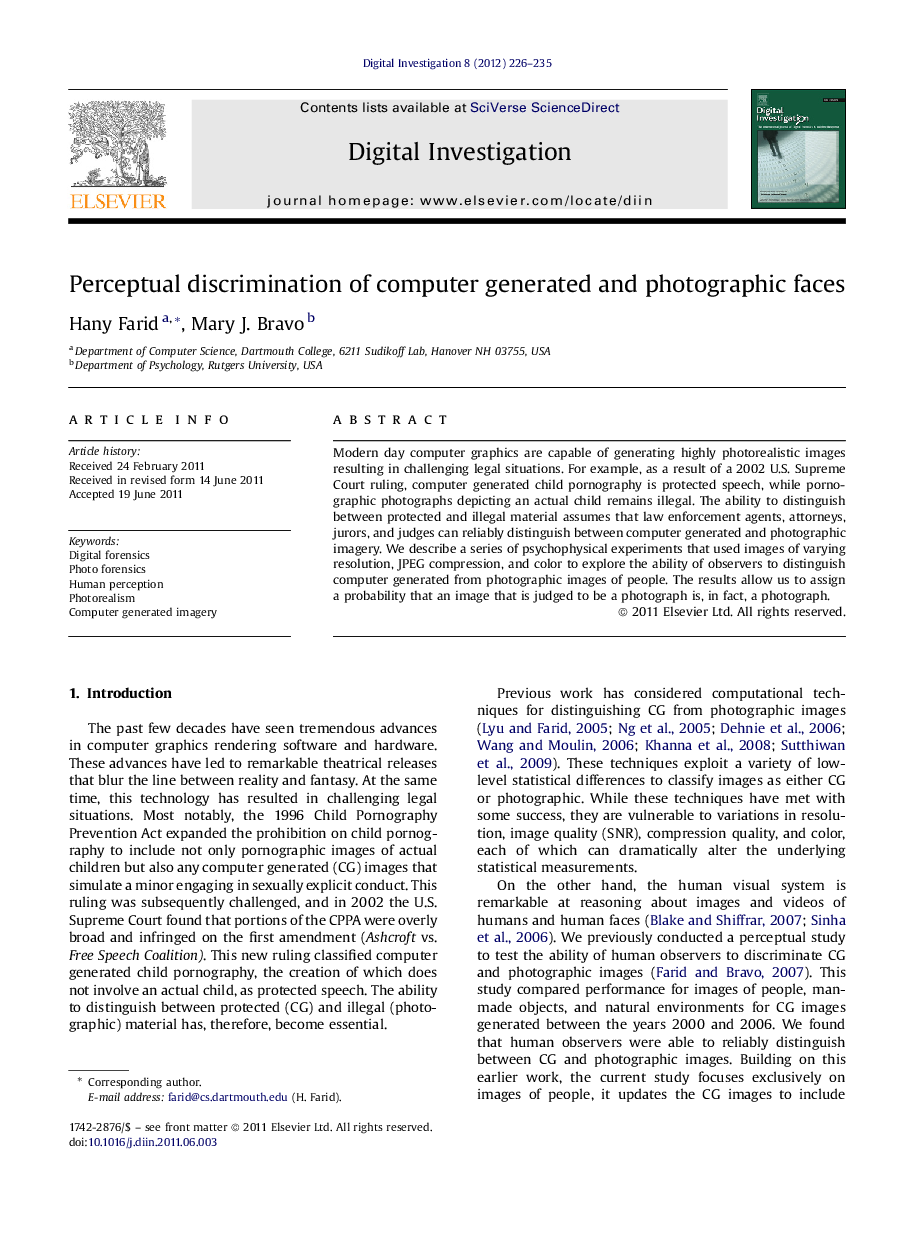| Article ID | Journal | Published Year | Pages | File Type |
|---|---|---|---|---|
| 456281 | Digital Investigation | 2012 | 10 Pages |
Modern day computer graphics are capable of generating highly photorealistic images resulting in challenging legal situations. For example, as a result of a 2002 U.S. Supreme Court ruling, computer generated child pornography is protected speech, while pornographic photographs depicting an actual child remains illegal. The ability to distinguish between protected and illegal material assumes that law enforcement agents, attorneys, jurors, and judges can reliably distinguish between computer generated and photographic imagery. We describe a series of psychophysical experiments that used images of varying resolution, JPEG compression, and color to explore the ability of observers to distinguish computer generated from photographic images of people. The results allow us to assign a probability that an image that is judged to be a photograph is, in fact, a photograph.
► Computer graphics technologies are capable of producing highly realistic images. ► We tested the ability of observers to distinguish computer generated from real faces. ► Observers can accurately perform this task. ► Observers can perform this task even at very low image resolutions and qualities.
